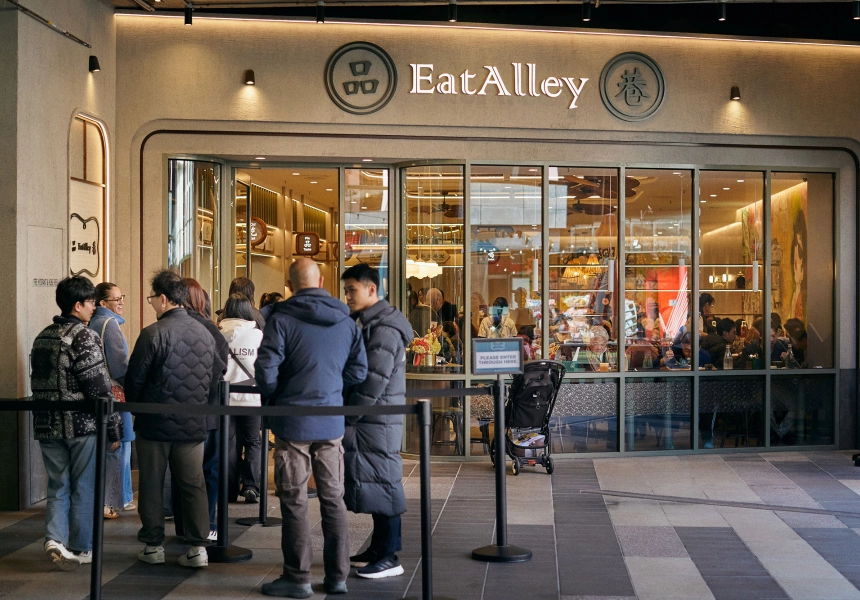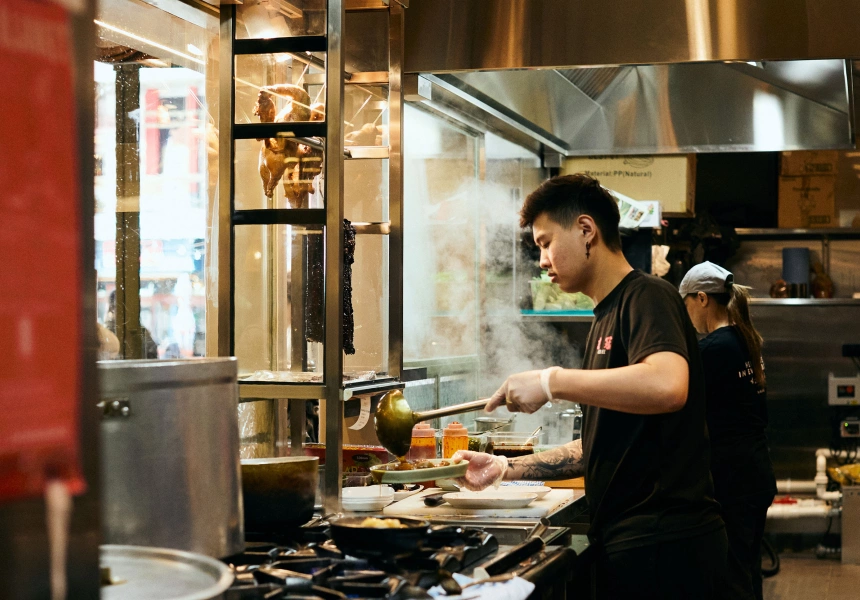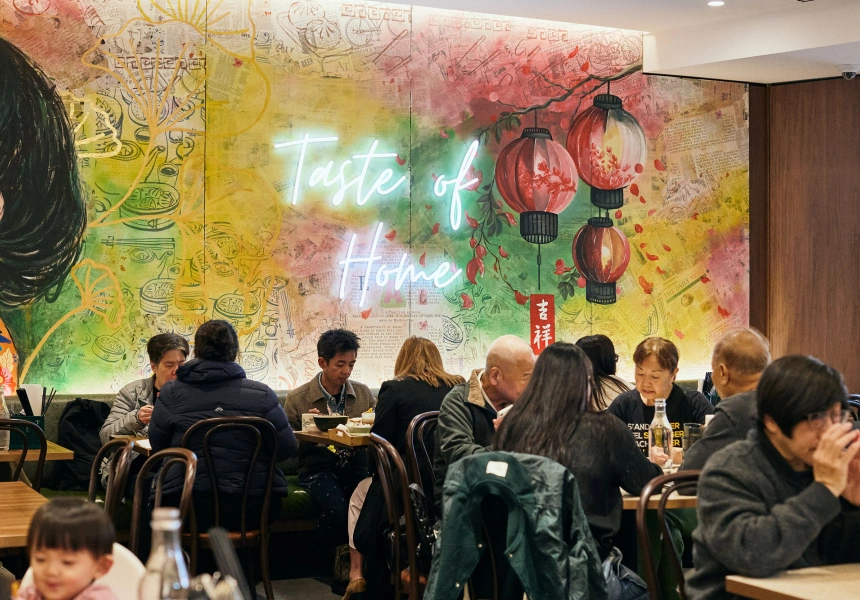If you've spotted long queues outside the former Pappa Rich site at QV recently, you're witnessing the effect of Eat Alley. This restaurant, which opened last month, offers dishes from 10 Malaysian hawker stalls, all cooking out of the same kitchen. It’s owned by ST Group, the company behind Australian outposts of chains including Gong Cha, Pappa Rich and Ippudo.
While most Malaysian restaurants bombard you with a one-size-fits-all menu, Eat Alley is a sniper, zeroing in on regional dishes, with specific chilli sauces that will evoke childhood memories for Malaysians near and far. For me – someone who grew up in Klang – it’s a nostalgia factory built to attract multiple visits. Here are my top picks for what to order at Eat Alley.
Bak kut teh from Siong Huat
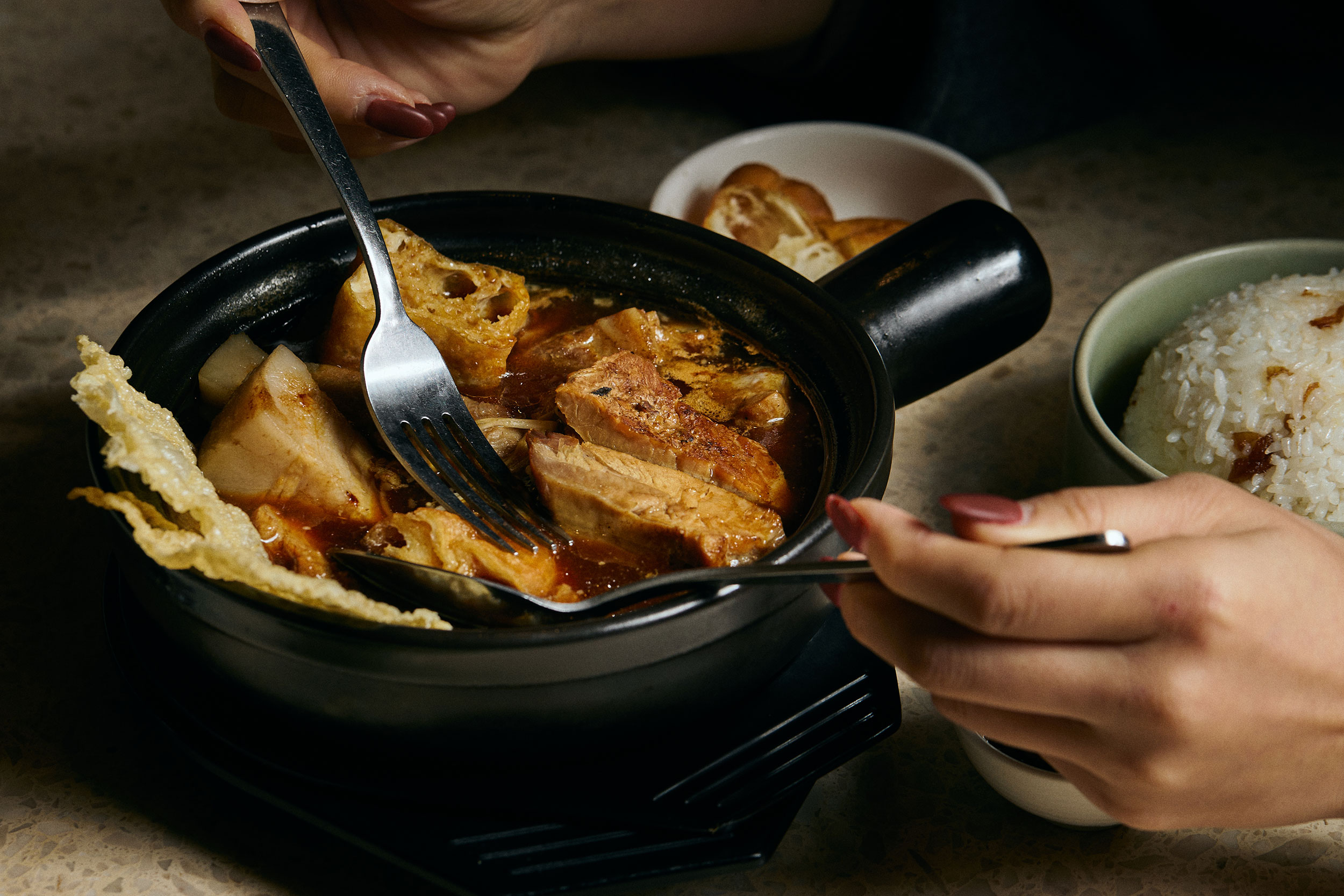
Join Broadsheet Access for exclusive invites to new venue openings in your city, plus other hot–ticket events. Membership starts at just $12 a month for an annual membership.
Join NowI grew up in Klang, so I went straight for the dish synonymous with my home town. Bak kut teh is a fragrant pork rib soup slow-cooked in herbs and dark soy paired with garlic rice and Chinese tea. At Siong Huat – a hawker stall from Klang that we refer to as, “the one under the big tree” – it’s served in a clay pot with enoki mushrooms, tofu puffs and bean curd skins, accompanied by yu char kway (Chinese doughnuts) and seasoned lettuce.
The bak kut teh at Eat Alley’s Siong Huat outpost looks the same as it does at the one in Klang. And the broth tastes like an embrace from an old friend. My ritual is to push down the doughnuts with the back of the spoon to soak up all the broth, add a tiny piece of the cut chilli, then eat it with the rice.
Hokkien mee from Hong Lai

Wok hei (the breath of the wok), dark soy, and pork lard are the foundational flavours of Hokkien-style fried noodles. Hong Lai has been a favourite in Kuala Lumpur for Hokkien mee (noodles) since the 1970s. At Eat Alley, thick egg noodles are imported from Malaysia to deliver that udon-like chew essential to a good Hokkien mee. They’re wok-fried with pork, prawns and vegetables and topped with crunchy lard croutons. There’s also a kway teow (rice noodle) version named moonlight hor fun – it comes with a raw egg on top, resembling a full moon. Mix it in like a carbonara and eat it hot.
Nasi lemak with rempah fried chicken from Kampung Signature
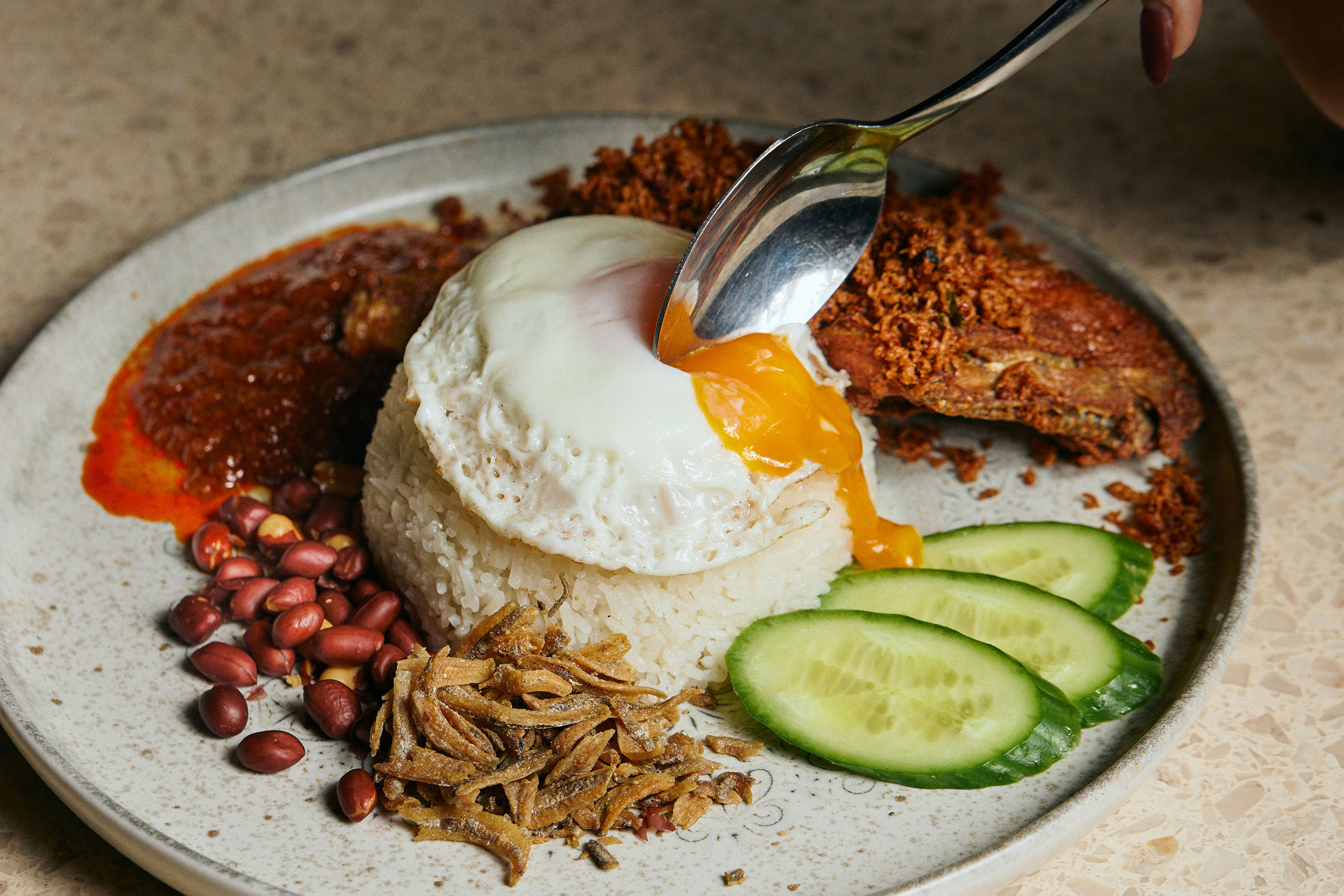
*
Nasi lemak is often referred to as the national dish of Malaysia. Each state, region and town has its own take. At Eat Alley’s Kampung Signature, you’ll find a Malay version by Nasi Lemak Fatty, named for the owner who started from a roadside stall in Taman OUG, Kuala Lumpur.
I will always insist that nasi lemak is the original deconstructed dish, pre-dating the fine-dining trend. The separate piles of coconut milk-infused rice, chilli sambal, crunchy anchovies, peanuts, eggs, sliced cucumber and the enormous piece of fried chicken Maryland may look disjointed. But when combined, it’s like a jazz band of Southeast Asian flavours. The fried rempah (crispy bits of shallots, lemongrass, and curry leaves) scattered on top makes this version stand out.
Braised duck from Kam Heong
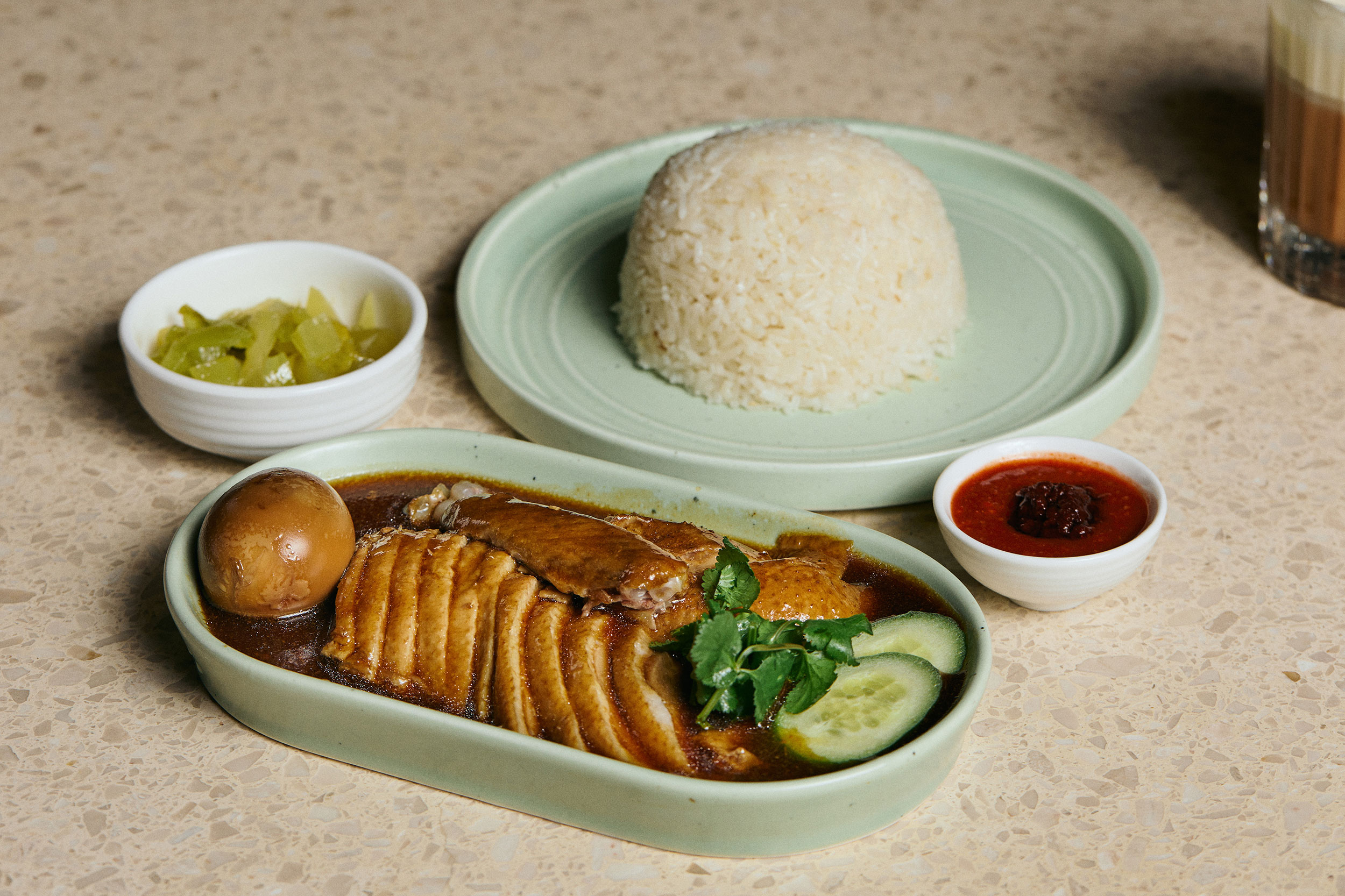
When you’re ready to graduate from chicken rice, consider lor ark (Teochew-style braised duck) known for its tender, boneless meat and delicate flavour infused with soy sauce and a hint of five-spice powder. Kam Heong has operated from a stall in Petaling Jaya since 1976, and the hawker stand’s sauce has a thicker consistency than you typically find for this dish.
Here’s how I eat it: try the duck as-is, with a mouthful of fragrant rice. Then dip another slice into the red chilli sauce with vinegar and eat it with another mouthful of rice. And then try it again with the cut chilli. Cleanse your palate with the pickles and repeat.
Dry wonton mee from Koon Kee
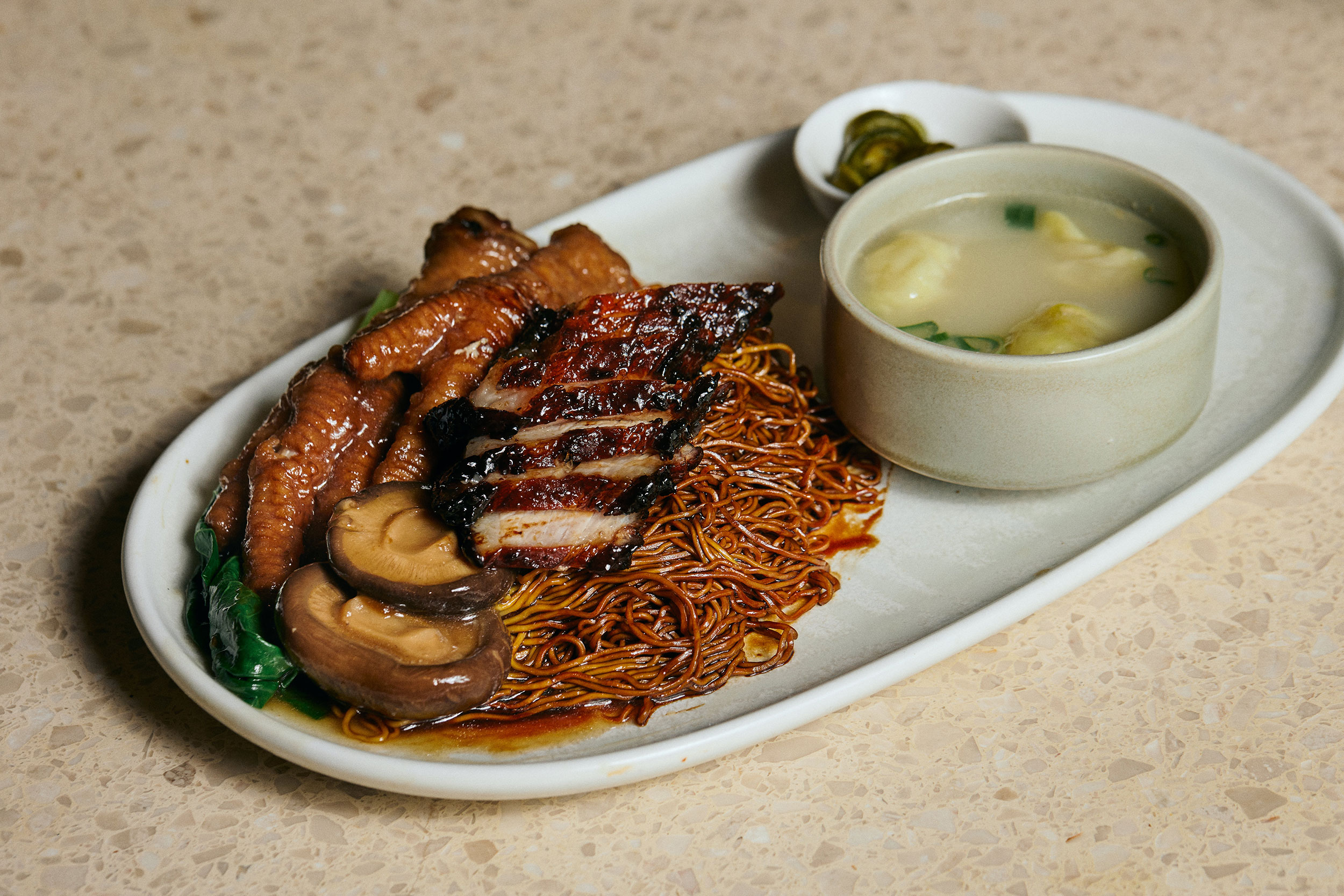
Don’t you dare confuse this with the soupy wonton noodles of Hong Kong. When a Malaysian declares their love for wonton mee, they’re talking about tangles of thin, springy egg noodles, tossed in a sweet, savoury concoction of soy and lard that coats them like a dark lacquer. On top sits a crown of char siu – skin burnished to a sheen – a few blanched greens, soup dumplings for good measure and sharp pickled green chilies to cut through all that richness. Koon Kee in Petaling Street (Kuala Lumpur’s Chinatown) sits behind a pancake stall with five tables and has been dishing its version of wonton mee with braised chicken feet and shiitake mushrooms since the 1940s. Now we can finally get it in Melbourne, too.
Toast set with soft-boiled eggs and kopi
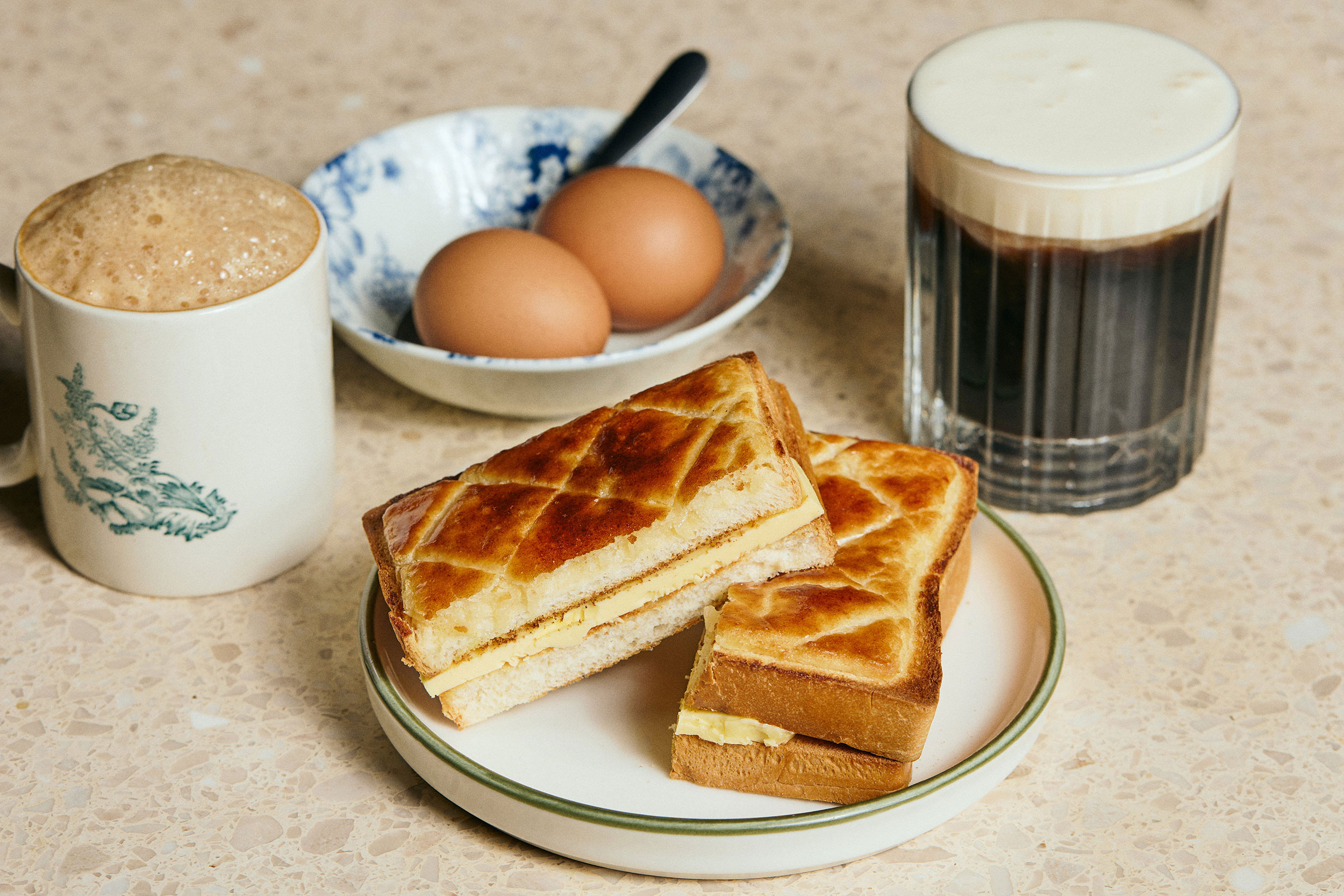
Eat Alley does not offer dessert (or alcohol), meaning the best option for diners with a sweet tooth is a classic cafe set featuring house-made toasted shokupan with butter and kaya (coconut jam), soft-boiled eggs and a choice of teh (tea) or kopi (coffee) with condensed and evaporated milk. Malaysians typically tick the kurang manis (less sugar) option.
The Hainanese toast set is ubiquitous across kopitiams in Malaysia, but Eat Alley has a mont blanc version of kopi with a thick foam of salted cream, and a Hong Kong pineapple bun-style crusted toast. Call me a purist, but I’d go for standard kaya and teh tarik any day.
